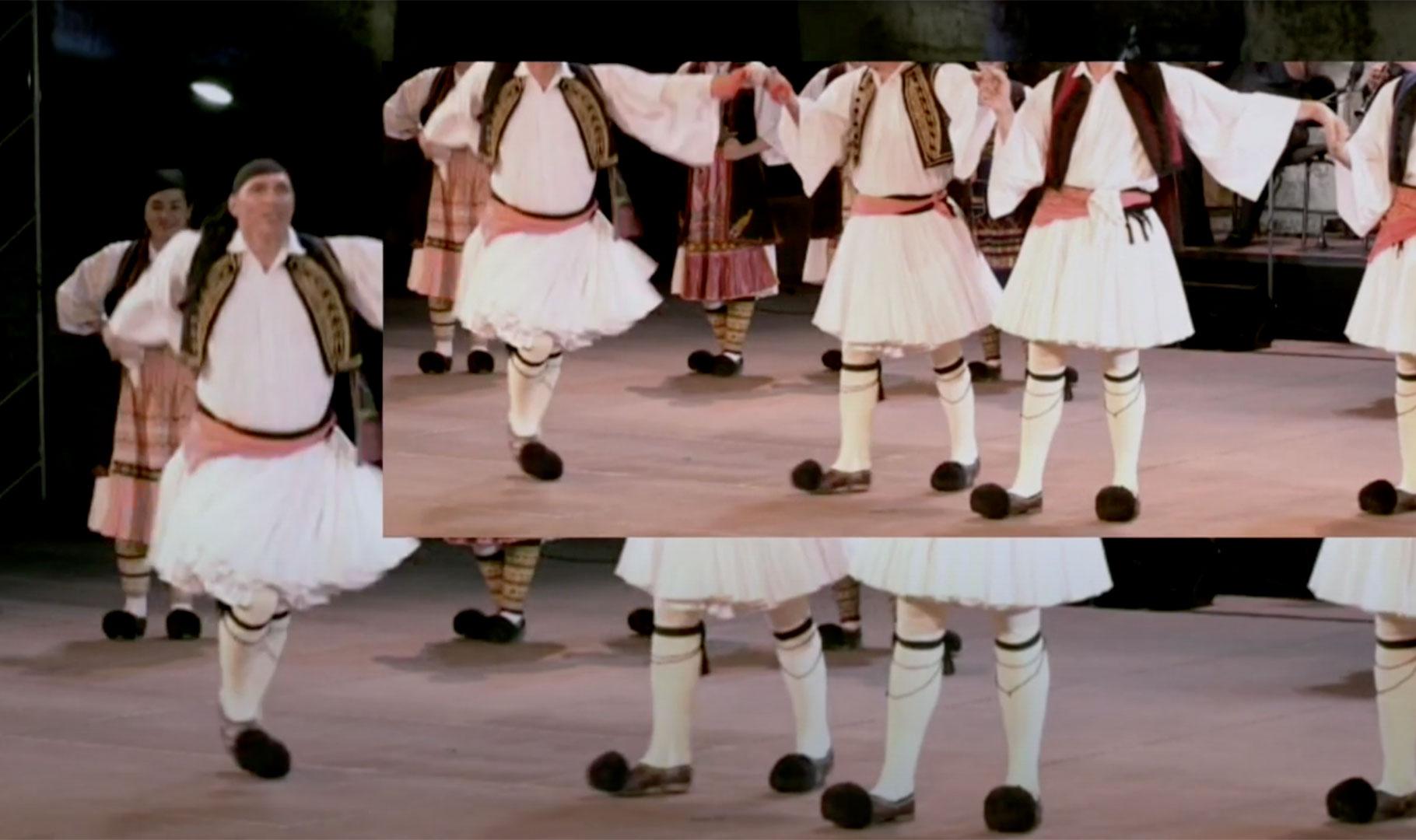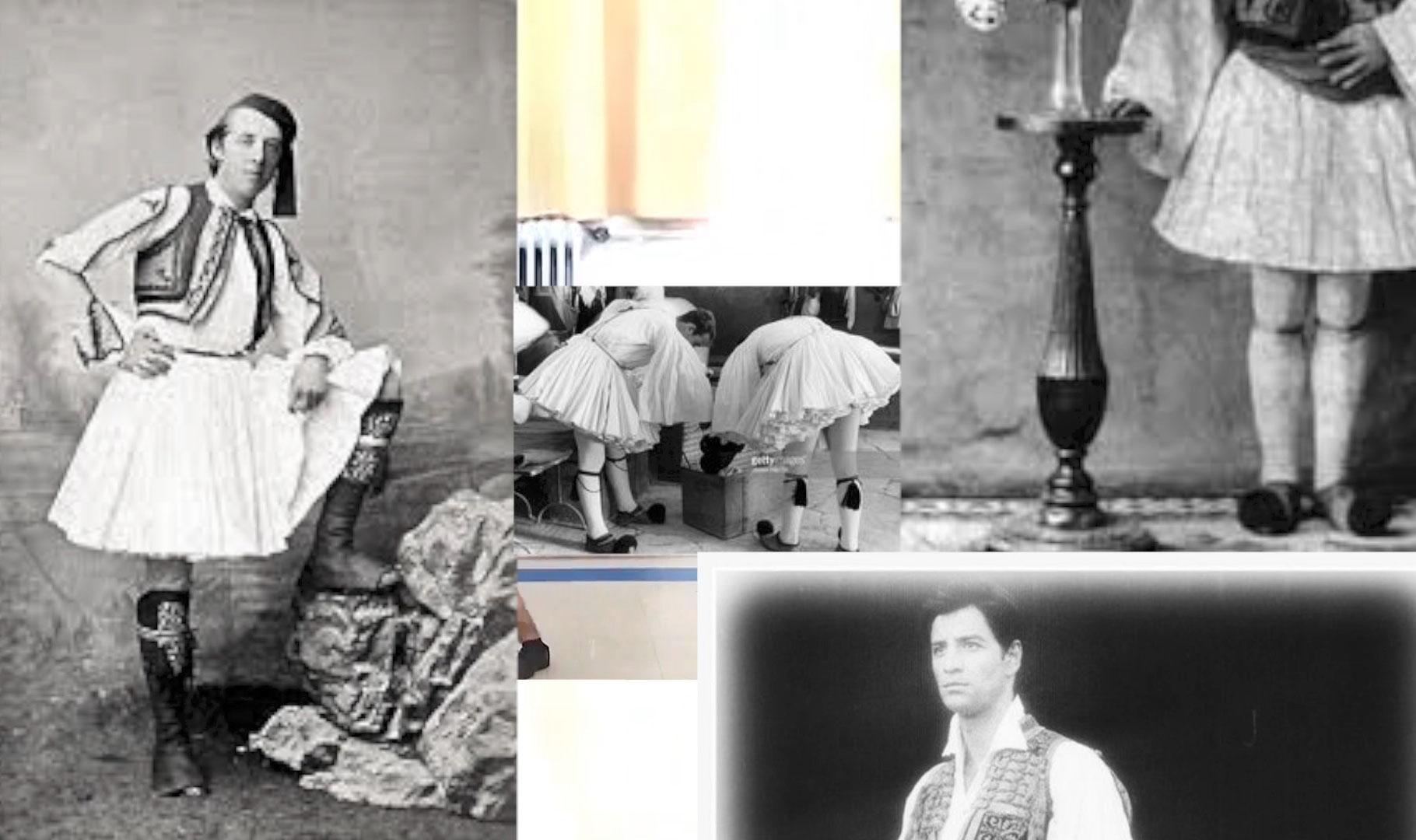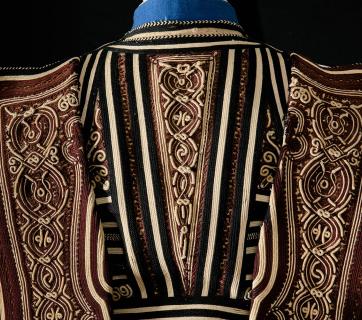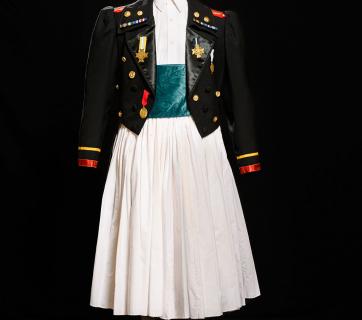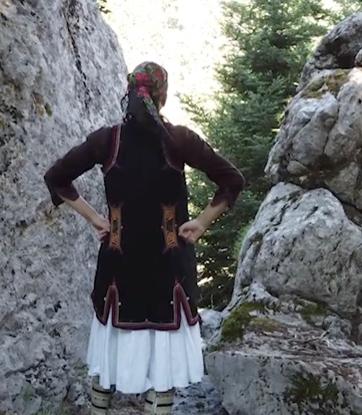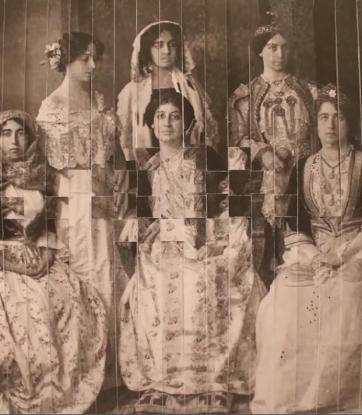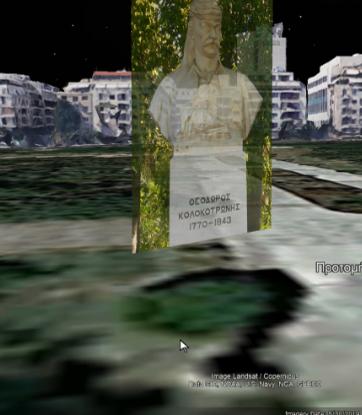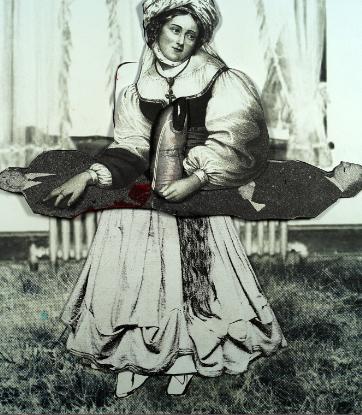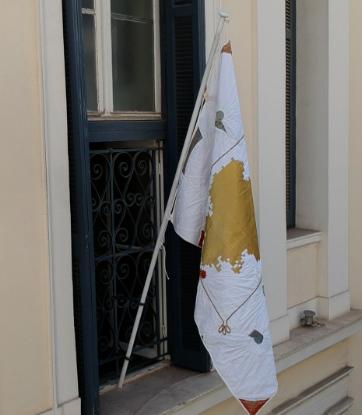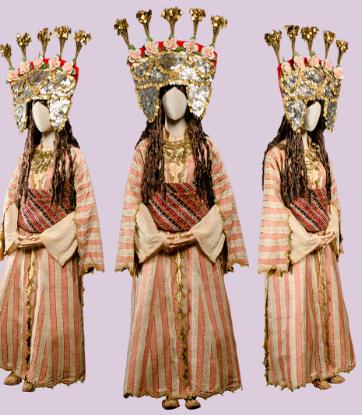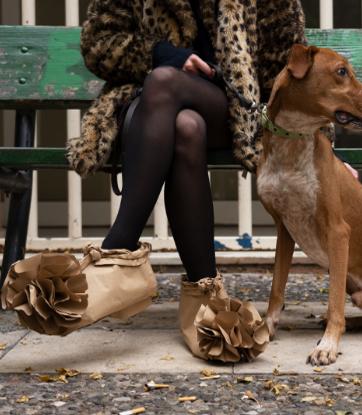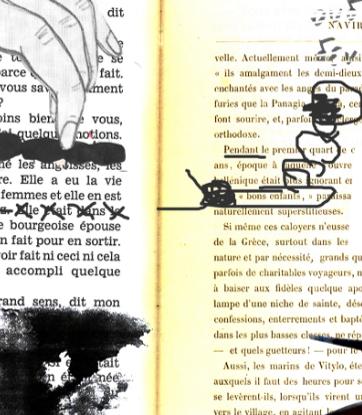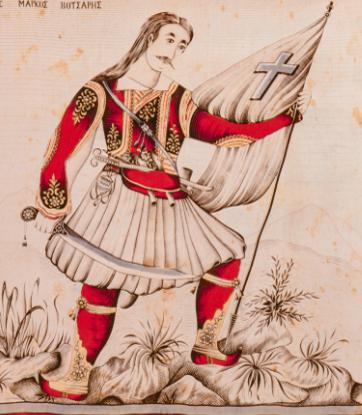Fustanela or Tailcoat? Quick Responses (QRs).
Starting from the fustanela of the 1821 fighters, both the version worn by King Otto and that worn by the Evzones, the exhibition unit “Fustanela or Tailcoat?” gives Quick Responses to issues surrounding the transformations and the different uses of the fustanela over the passage of time, focusing primarily on the disputes that arose around it a little before and after it was established as the official “national costume”.
At the same time, prompted by artistic creations inspired by the fustanela –such as the costumes of the Chorus members in Bost’s Medea (2019)– but also by various versions of it that have, at times, been introduced as “fashion”– like Mick Jagger’s variation (1969) – the episode focuses on subversive and hybrid ensembles, which nevertheless manage to identify with sartorial stereotypes of “Greekness”.
The fustanela –internationally known mainly as the garment of the fighters of the 1821 Revolution –went from everyday shepherds’ attire in the Balkan region and from a dress type connected sometimes with the Arvanites, sometimes with the Souliotes and sometimes with other fighting corps, to becoming the trademark of Modern Greek national identity when it was adopted by Otto, the first King of Modern Greece, as the official attire of his court. This type of garment became semantically charged in different ways over the years, while it even left its imprint on “fashion”, through a large number of transformations –some of them startling, others unexpectedly innovative, and others politically incorrect to the point of being “heretical”.
Learn more by following the links
Otto disembarks in Nafplion in 1833 wearing European clothes, but…1
Fustanela made from American fabric...2
Are you Frenchman, Greek, Ottoman, Hellene, Roman?3
The future belongs to black suits...4
Or
Visit the physical exhibition to see the exhibits up close and scan the QR codes you meet to watch the corresponding information on your device.
- 1. Otto disembarks in Nafplion in 1833 wearing European clothes, but in 1835 his father, King Ludwig the first of Bavaria, arriving in Greece for his enthronement, urges him to adopt “the Greek military uniform”, the fustanela, recounts Bavarian archaeologist Ludwig Ross, the first director of the Greek archaeological society and later Professor of Archaeology at the Ottonian University, in his Memories and notices from Greece (1832-1833). Otto appears in public wearing a fustanela made by the tailor from Nafplion Stavros Kremydas on January 25, 1836, on the third official anniversary of his arrival in Greece. The “ottonian” fustanela is also established as the official attire of the senior officers of the royal Court “in order to appear more imposing in the Court and in the Western capitals”. However, Christiana Lüth from Denmark, the wife of Queen Amalia’s personal priest Asmus Heinrich Friedrich Lüth, conveys in her diary’s pages that Amalia herself objected to her husband’s attire, because she believed that it contributed to his constant colds, as it left his neck uncovered and had open sleeves. But despite this and various reproaches from his doctors, who insinuated that it was the cause of his infertility, the fustanela becomes Otto’s favorite garment, which he continues to wear even after his dethronement, and which he asks to be buried in.
- 2. “Fustanela made from American fabric, leggings of iron-coloured felt and a red fez”, stipulated Royal Decree 2/14.3.1833 “On the formation of skirmisher battalions”, as military uniform for the irregular fighters’ corps after their disbandment. Moreover, the fustanela was worn by the Royal Phalanx, the corps formed in 1835 in honour of the Revolution fighters. By 1813 the fustanela is established as the standardised military uniform for the volunteers who enlist in the Regiments of the Greek Light Infantry of the English Army based in Zakynthos. Many were those, however, who claimed then that the fustanela was not compatible with the European prospect of the army and, moreover, that ”this garment was never Greek” but ”Albanian” (Newspaper Athena, 5/3/1838). Despite this, the official effort by Otto’s Regency to standardise the regular army according to the example of western military forces did not happen without complaint. As the Bavarian officer Christoph Neeser recounts, “[…] thousands of men […] on receiving the decisions of the Regency about them […] refused to enlist in the regular army and the main reason behind their refusal was the fact that they did not want to wear the Frankish uniform”. In full agreement with the resistance of the soldiers was the revolt on board the brig NELSON from Psara, when the crew refused to wear the “shameful Frankish clothes”. In 1834 the Light Infantry was set up with a uniform consisting of a fustanela and a dark blue fermeli (waistcoat). This corps constituted the Royal Guard (later called the Palace Guard and today called the Presidential Guard). Finally, after Otto’s eviction, in the Royal Decree of 12.12.1868 “On the formation of four battalions of Evzones” the uniform of the Evzones is defined as “fustanela, knee-length, made of no more than 150 triangular pieces of bias-cut white material” and “domestically made fez with a knitted silk tassel, bearing the crown and the national emblem”.
- 3. ”Are you Frenchman, Greek, Ottoman, Hellene, Roman? Which are you, wandering the streets in clothes befitting no man? A Roman toga is the robe you choose to wear indoors, and many times I've seen you all wrapped up in Asian furs. Your hair you've shaved as in the style that Turkish heads does grace; with whiskers of a Frenchman's style you choose to frame your face. Around your head's a neckerchief in colours quite audacious; And out of pants ten cubits long, and church robes wide and spacious the mere three cubits of your size can hardly reach to peek. Just choose the Turkish clothes to wear, the Frankish, or the Greek. To be a Hellene true, for sure, would not be so absurd; to be half French, and yet half Greek, and Ottoman a third, and quarter Roman all at once - well, that's the thing that bothers. You've now turned cosmopolitan, so go live like the others! ” (Alexandros Soutsos, satirical poem E, 1827-english version by Marilisa Valtazanou). In the satirical lines of his poem above, Soutsos brings up the need for the appearance of the Greeks to be consistent. N. Dragoumis also describes the same picture in his Historical memories: “[in 1827] at the Troezen convention the delegates sat wearing various clothes, such as fustanelas, Frankish clothes, baggy trousers, Asian garments, sheepskins or capes.” Indeed, many sources refer to the sartorial disparity of 19th century society– some decrying the phenomenon, some satirising one choice and some targeting another, and some mocking the whole situation. Iakovos Pitsipios (1803-1869) in his work Xouth the Ape or Social mores of the century (1848), satirises in the person of Kallistratos Evgenidis, a noble young man of Athens, the manners of people of post-revolutionary society who ape foreign ways of life and adopt western clothing styles: “[…] in truth, there was no custom or European fashion that Kallistratos did not immediately imitate, and indeed to the point of perfection; the tailors, shoemakers, barbers, perfumers, milliners and washer women of Athens always stood on the side of the street every time this barometer of Western fashion walked by in order to observe him from head to toe, to peer at him and smell him so that they could arrange their actions and businesses accordingly; […]. On the other hand, in his poem “The fustanela”, Achilleas Paraschos presents the side that despises every new trend: “[…] the whole nation is about to wear Frankish clothes, “And all we had was a waist for fustanela! No; you are not children of ours, and your father “Is not Botsaris and Karaiskakis”. However, the coexistence of “traditional” and European garment is a fact that will continue through the first four decades of the new state, with some adopting the westernised trends and disengaging themselves from more “traditional” configurations and with others insisting stubbornly on the latter. A typical case is that of Vassos Mavrovouniotis, who – according to sources – showed up at receptions at the Palace wearing a fustanela while his wife accompanied him wearing a French evening gown.
- 4. “The future belongs to black suits. In a hundred years there will be no Pallikaria (fustanela-wearing men)”, the French novelist, journalist and scholar of the French School Edmond About predicts in 1850, almost prophetically. Indeed, in its issue of 4/5/1922, the newspaper Embros describes the “phenomenon” of a man appearing in the centre of Athens wearing a fustanela as regressive in an era where the fustanela has lost whatever utility it had and in a society that dreams of becoming more European: “In parts of Greece where some years ago the white fustanela was shining brightly, the markets are dominated by so much black that one thinks that people must be mourning. At the Epitaphios procession in Tripolis one sees many civilians in a frock coat and top hat à la Chicherin. At last, every era has its garment […]. Voilà, we are surprised by the appearance of a fustanela in Athens when even just a few years ago the fustanela was a common sight in Plaka. Someone commented: Very strange garment, this fustanela. I wish I knew if it was invented by necessity or for decorative purposes. Because a practical garment it is definitely not. It does not protect from the cold and it is not exactly agreeable to hang something that weighs a stone around one’s waist. It does not provide gravitas, either. Look at this handsome man. Doesn’t he look a little like a bearded ballerina? […]“. Although at the end of the 19th and the beginning of the 20th century in the now-urbanised capital most people are following the trends, some are expressing a strong resistance to anything imported from abroad. A typical example is that of Alexios Striftombolas (1834-1912), a member of parliament from Patra with heritage from Sigouni in Kalavryta. He was the only one to continue wearing a fustanella, as if he were another Spyros Louis (the Greek athlete who won the marathon at the first modern Olympics), but he was seen as a quaint figure in the Greek Parliament by his contemporaries.
The unit is accompanied by a video by Mary Thivaiou titled “φου (fu) fighters”. The artist focuses on indicative contemporary sartorial ensembles that draw their inspiration from the fustanela, in some cases creating something that matches the style of clothing of a “pallikari” (brave man). Other times, however, they deviate from the lines of what is “acceptable” and disconnect from structured rules, provoking new or deepening existing identity crises and the way they are “fashioned” through dress.
Specifically, through the visual metaphor of a fencing match, where the opponents interact with, attract or repel each other in the same way that styles and fashion trends sometimes bring us closer and other times drive us apart, Thivaiou concentrates on subversive and unconventional newer versions of the “fustanela”.
In her shots, the bright white fustanelas of the Evzones create a sort of contrast with the all-black neoprene (diving suit material) ones created by Elli Papageorgakopoulou for the National Theatre cast in Nikos Karathanos’s Golfo.Furthermore, fustanelas representing “folklore” dress are placed on stage for the needs of music and dance shows, and alternate with hybrid sartorial “ethnic”-style ensembles that leap out on other musical stages, such as the Scottish-style kilts combined with the “fustanela” by Koza Mostra at the 2013 Eurovision Song Contest.
Nevertheless, in this “montage” that Thivaiou creates, combining multiple images and by extension multiple messages, there is no shortage of examples that deconstruct, reject or reinforce gender stereotypes: from the female version of the fustanela that French designer Jean Paul Gaultier created, aiming, as he said – at a “game between male and female coding”, to the much-discussed look of Mick Jagger at his 1969 concert in Hyde Park, which was considered an example of cross-dressing by the rock star and commented on negatively by the British press. On that occasion, the front man of the Rolling Stones appeared before the audience with makeup and chin-length hair and wearing a rock-military style tunic designed by avant-garde designer Michael Fish, who took inspiration from the Evzones’ fustanela.
So, in any case, the “fustanela”, in spite of having lost any utility, is adopted by designers, models, singers, actors, dancers etc. – sometimes changing shape, sometimes length and sometimes colour – is transformed, and, whether it is adapted or not, and whether it sits above or below the knee, is merged into new aesthetics each time, often provoking a variety of discussions.
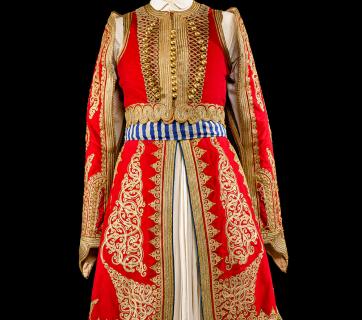
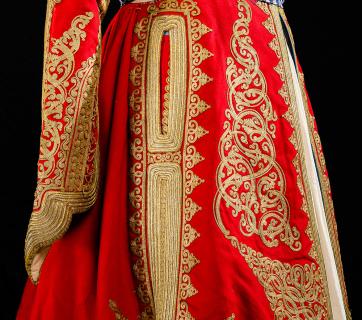
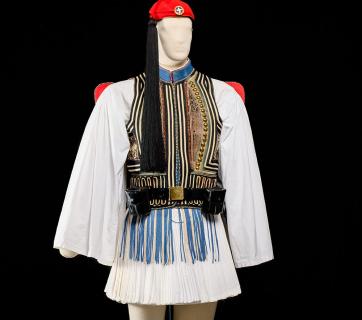
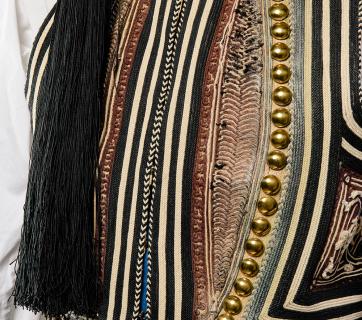
Tania Veliskou studied History and Archaeology at the Aristotle University of Thessaloniki, receiving scholarships from the Tsagada Legacy Fund for her performance in the programmes of Folklore and Social Anthropology. With a scholarship from the “Maria Heimariou” Foundation, she undertook postgraduate specialisation studies in Museology at the Department of Museum Studies of the University of Leicester, U.K.
She has participated in research programmes at the Aristotle University of Thessaloniki on the documentation and management of costume collections, as well as in folklore research in situ in Northern Greece. She works as a curator at the Museum of the History of the Greek Costume of Lykeion ton Ellinidon, primarily on museological research, museography design and the curation of thematic exhibitions. She is a member of the Hellenic Costume Society.
Tania Veliskou
Mary Thivaiou
We Design
Nikos Saridakis
Presidential Guard
Diana Notaroglou
Penny Saccopoulou - Valtazanou
Presidency of the Hellenic Republic and Presidential Guard, Greek National Opera, its Artistic Director, Giorgos Koumendakis, Konstantinos Skourletis of bijoux de kant, "B. Papantoniou" Peloponnesian Folklore Foundation, Daes London Insurance Market, as well as Dionysis Lavdas, Assistant of the Wardrobe of Lykeion ton Ellinidon
Lykeion ton Ellinidon
(Dimokritou 14, Athens 10673)
Monday - Friday 10.00 - 14.00
210 3629513, 210 3611042
